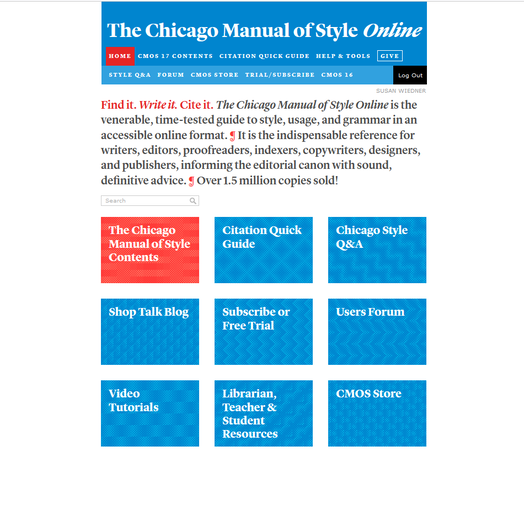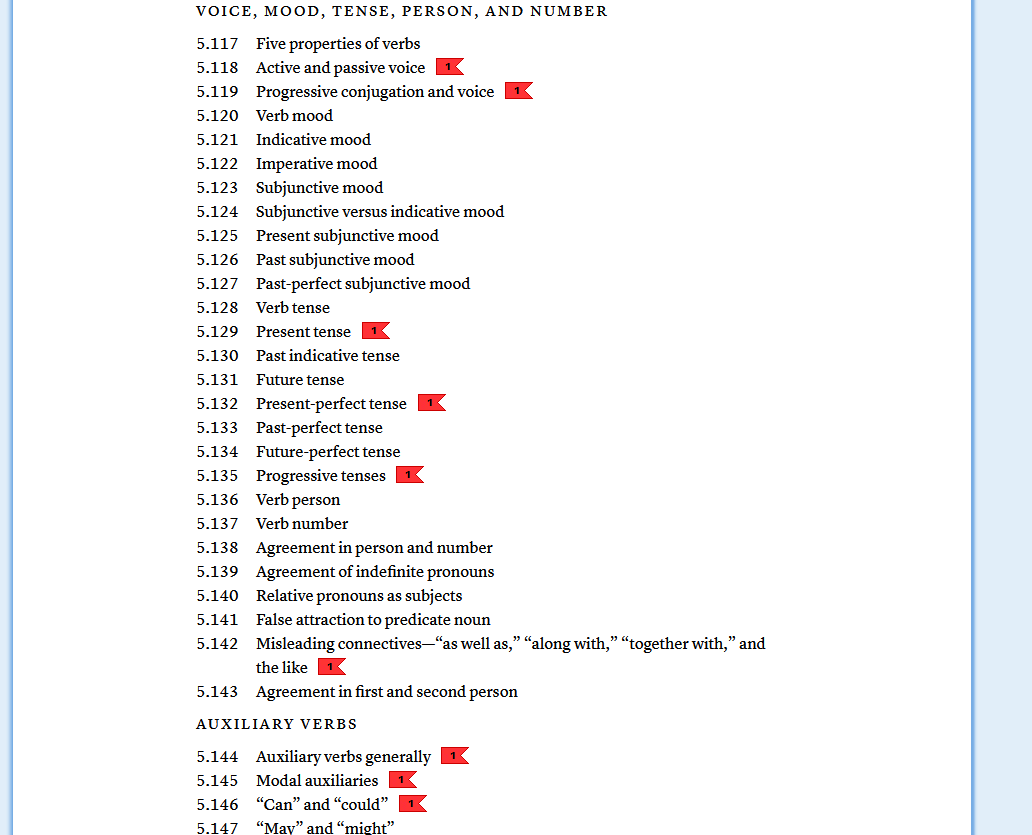|
Whether you're a new writer struggling with sentence structure and grammar or an experienced writer who wants to ensure they get every point across clearly, a style guide is the answer.
But not every style guide is created equal. For most writers, there’s one that I recommend above all others--The Chicago Manual of Style (CMOS). Read on to learn how it was developed, why it will strengthen your writing, and the benefits of an online subscription over a hard copy edition of the text. What is CMOS?
According to its website, The Chicago Manual of Style is “the venerable, time-tested guide to style, usage, and grammar. . . . It is the indispensable reference for writers, editors, proofreaders, indexers, copywriters, designers, and publishers, informing the editorial canon with sound, definitive advice.”
The University of Chicago Press introduced the style guide in 1891 as "The University Press style book and style sheet." Initially, it was used as a style sheet, or common set of rules, to correct inconsistencies and find typographical mistakes across the university press. The 12th edition (1969), complied by Catherine Seybold (1925–2008) and Bruce Young (1917–2004), was a revision that solidified the position of CMOS as the industry leader on style matters. It is now in its 17th edition, with over 1,000 pages in the print edition and over 2000 hyperlinked and cross-referenced paragraphs. It is the authoritative style guide for fiction and non-fiction books and popular magazine articles. Why is CMOS important to a science writer?
If it’s the authoritative style guides for books and magazines, why does it matter to a science writer? Different scientific fields or publishers, such as the American Chemical Society, the American Institute of Physics, and the American Medical Association, have different style guidelines. Yet many of these field-specific style guides are based on CMOS (check out the subscriber testimonial from the American Meteorological Society), even if they disagree about comma placement or hyphenation rules. You’ll find that the fundamentals of grammar and writing, such as sentence structure and sentence parts, remain the same across them all. Notably, there is even a scientific companion to CMOS, Scientific Style and Format, that was developed by the Council of Science Editors to be an indispensable guide to science writers.
No matter your scientific discipline, you need to understand fundamental guidelines and conventions to share your message logically and persuasively. Within "Part II: Style and Usage," CMOS has extensive chapters explaining grammar fundamentals and the role of punctuation. This section is an invaluable resource when learning to write effectively in any scientific field. How do I use CMOS Online?
Because the hard copy of CMOS is over 1,000 pages (yikes!), I recommend getting an online subscription. Although some prefer to read the hard copy, which feels good in the hand, with an online subscription, you can
Keyword search the entire contents of CMOS
Submit a question to the Chicago Style Q&A
If you can’t find an answer to a style question, CMOS Online has a robust Q&A section. You can submit a question, browse questions, and get alerts. Members of the manuscript editing department answer questions regarding CMOS conventions not found in the style guide or a dictionary.
You can check out the answer to this question from the Latest Q&A page: Can you please add “wise” to the hyphenation table? I’m curious if you would use a hyphen in a sentence like “Accessibility-wise, my favorite city was Tokyo.” Access the online Users' Forum
Although, questions and answers are accessible by anyone, the user’s forum is specifically for subscribers. The forum is organized by category (i.e., copy-editing, business), then topic (punctuation, tables and illustrations), then threads and posts. Here you can reach out to others who may have the same problem you’re struggling with.
Access common-problem guides
Two important guides, the “Hyphenation” and the “Good usage versus common usage” guides, are readily available. These are invaluable to writers, even writers of scientific journal articles! Sometimes, you'll wonder, "Do I hyphenate this word with an -ly ending?" or "Should I be using the word ‘effect’ or ‘affect’?"
In these cases, you’ll be so glad to have access to the CMOS guides. After consulting one, you can confidently write: “We did affect the reaction by including 2 equiv. of the additive, as indicated by the color change, but we could not determine the effect of the additive on the reaction by NMR because the additive is paramagnetic.” Access blog posts and quizzes
If you’re a self-proclaimed grammar nerd like me or just curious about your grammar skills, you can access grammar quizzes. For example, the Chicago Style Workout 76 covers grammar standards from chapter 5. The workouts are quick, and you get the results and reference paragraphs immediately.
You’ll also find the blog CMOS Shop Talk, which reviews the if’s, when’s, why’s, and how’s of CMOS style conventions. Is CMOS Online worth the cost of subscription?
As a solopreneur with limited resources, I carefully consider every resource I purchase.
CMOS Online is one of the first resources I bought for my copy-editing business, and it’s been an incredible investment. It is my go-to resource for general usage and style conventions; I cannot edit without it. Have I convinced you that CMOS Online is worth the subscription price? Do you have more questions about CMOS? Tell me in the comments!
0 Comments
Leave a Reply. |
AuthorSusan is a scientist turned writing service specialist. Her interests include the clear communication of scientific research and complex subjects. Archives
June 2024
Categories
All
|




 RSS Feed
RSS Feed